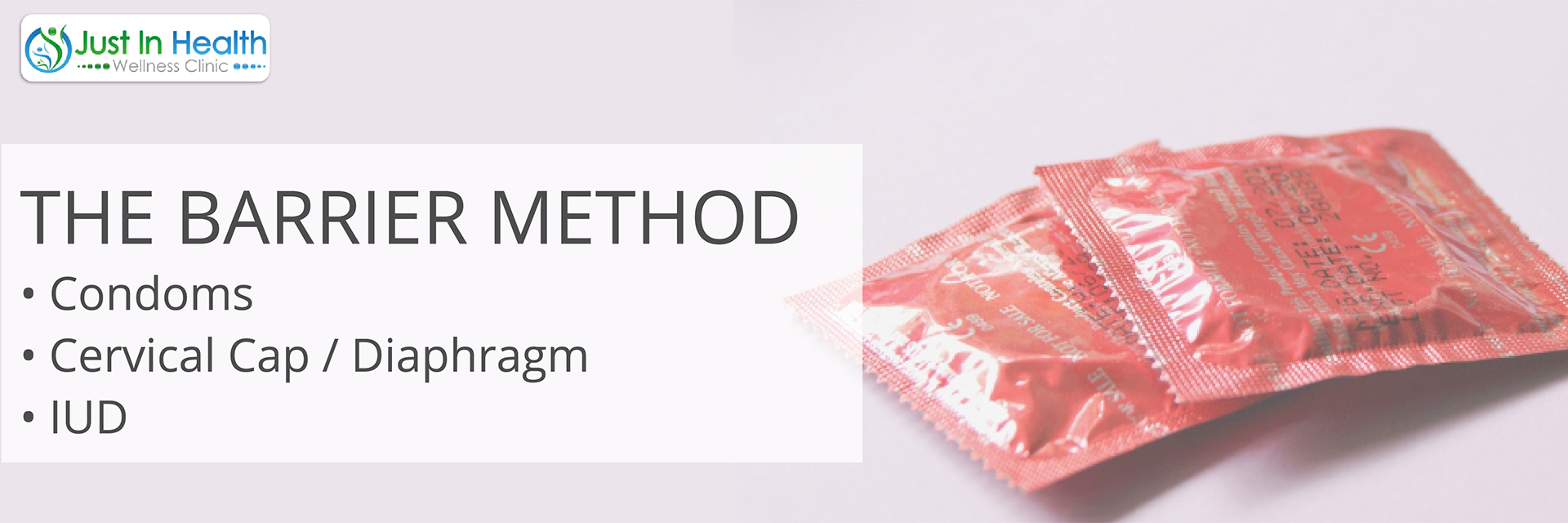

By Dr. Justin Marchegiani
Learn all about the different methods and approaches to preventing pregnancy naturally. Gain information about the ovulation cycle of women and how it is affected by different methods such as the rhythm method, barrier method which includes use of condoms, cervical cap, IUD, and the chemical method which is by use of the birth control pill. Find out about the pros and cons of each and combination of approaches and determine which one works for you.
I have lots of female patients that are inquiring about this. Also their male counterparts who is trying to figure out ways that they can prevent pregnancy without having a whole bunch of synthetic hormones in the body. So we have the conventional approach, which we'll talk about today and we’ll also compare that some of the natural approaches and figure out what works best for you. At least give you the options that you can make a better decision.
1. Rhythm method (time-based)
2. Barrier methods (condoms, cervical caps, diaphragms and IUDs)
3. Chemical methods (birth control pills)

Whether they’re a synthetic estrogen or progesterone-based, we're going to go through this one by one. So off the bat, we have the rhythm method. First thing with the rhythm method is you have to know what your cycle is like.
A typical cycle is going to be about 28 days long, on average. If we draw this out, 28 to 0, that gives you a good frame of reference. And we're going to use the red for the estrogen. The first half of the cycle you’re going to see, estrogen kind of pop-up a bit. Then it drops off the last half of the cycle, like so.
Progesterone is going to be blue here. You’re going to see progesterone comes up, right about here in the middle of the cycle and then falls off here at the end. So you could see here, first part of the cycle right here- the start, this part here is going to be the follicular phase- put an f and x to it. And this part over here will be the luteal phase.
Estrogen predominates in the first half. Progesterone predominates in the second half- really important. Now ovulation, the primary in which pregnancy can occur, is going to happen right here, right in the middle. This is the money right here. That’s the money shot. And that's where the sperm and the egg have to meet at the same time. And that’s going to be where that happens.
So knowing that, what we do based on that information? If we have about 2 to 3 day window here, so about 2-3 days here, and we know sperm can live about 5 days – 5 to 7, essentially. We have a 5 to 7, plus three-day window here. Essentially, we got about 10 days a month a woman could potentially be fertile if sex happens beforehand. Because if ovulation’s already happened, it wouldn’t matter if sperm came in here because the hormonal timing is now passed. But If we have sperm in here ahead of time, they could easily get in, fertilize that egg. And a baby would be on its way, so to speak.
We have about 10 days of fertility a month – 10 days. And again, it really takes someone knowing their cycle. I recommend a female having at least six cycles, whether within at least a day or two. So they kind of know where that ovulation is.
A couple things you can do to figure that out is a great app called Kindara on the iPhone. And the first thing that you can do, is you can track your temperatures first thing in the morning. You will first notice a drop in temperature. And second thing you’re going to know that you're already into ovulation, is you’re going to notice an increase in temperature following the drop.
So it’s the drop first. The increase, second. And this kind of means you’re already in the middle of ovulation here. We’re already ovulating here. And the last thing would be also noticing some cervical mucus, kind of like an egg yolk kind of consistency. So those will be the three categories that you would use while you're in your cycle to kind of confirm that you’re moving along in the right direction. You can also do an ovulation test which measures luteinizing hormone. It's part of the brain signaling that increases progesterone which is part of that increase in temperature there.
You can do the rhythm method and use it to avoid sex during this time frame here to here. The big thing is you have to make sure you don’t come in too soon after. So typically, day 10 to day 20, or day 8-18 is pretty safe. And if you're on the fence, you can use a condom and/or various barrier methods if you're within a day or two and you’re kind of uncertain about it. Barrier methods or as we said the rhythm method works about 88% of the time. So just be very mindful. It’s not perfect. If your cycle is inconsistent or you’re more on the unhealthy size from a hormone perspective, you may want to look at combining a condom or barrier method along with that. That’s the rhythm method there.
CLICK HERE to ask a functional medicine doctor about birth control

So with the barrier method, we have a couple standard ones here. You have your condom, which will protect you from STD’s as well. Well that's a male counterpart, right there. The others will be all female counterparts.
There’s a pill that we’re using. It's not quite out yet, but it’s decreasing FSH for men which then creates spermatogenesis downstream. I’m not sure how much I feel about that yet. Not an update on it, but it’s something. It’s coming out – the male version of the pill.
So condoms are going to be the first one. Again, this will actually protect against STD, which is good. The others won't.
You’re going to have your cervical cap / diaphragm, kind of similar. And that’s just the barrier. Basically, it's blocking the cervix where the sperm would come in from the cervix into the uterine lining or into the uterus. It basically caps that off and blocks it. So you have the cervical cap and the diaphragm.
It basically sits in the uterus here and prevents the egg from implanting. That’s how the idea works. It is effective of disrupting implantation of the egg, so the egg can't come in there and stick. We have barriers: condom, cervical cap, diaphragm, IUD. So couple things here. This is going to be something the guy can use. Also protects the STD’s there, too.
Cervical cap and diaphragm are great because they can be combined with the condoms. So you have a barrier method on the male side, a barrier method on the female side, which provides really good, extra coverage. The only thing is you got to put all these things in. You can’t let these things stick. You got to put them on before sexual intercourse or foreplay. So you're going to know to do that ahead of time. 1-2-3.
The IUD is nice because it's always there. So you don’t have to plan it ahead of time. The main one that we recommend would be the Paragard IUD. That’s going to be a copper based IUD. You have to worry about some copper issue with that. But, I mean it’s not going to be the Marina which is the progesterone, synthetic progesterone IUD. So it'll be a copper IUD and it's always going to be there. Some women, it can create bleeding issues. You got to figure out if it's right for you or not. You may want to try it and see if it works well from a symptomatic standpoint, but that's always going to be in there.
A lot of times you can do an IUD, you can combine with condoms or if you don't want to do the IUD because of side effects or you're worried about the copper issues, you can combine the barrier method with the condom method and then you got a really good shot. And you can also just do the condom method. That’s still going to be good, 90%+ of the time. If you combine them, obviously you get even better coverage. That gives you the barrier method there. So you have the rhythm, and again you can use all these and combine them with the rhythm method during that 10-day time frame at your hormonally sensitive for ovulation and for fertility and pregnancy. So these can be combined with the rhythm method.

So with the chemical method, let's talk about the birth control pill. The birth control pill, in general, works by inhibiting ovulation by decreasing feedback loops in the brain. So real quick, we have our brain. And we have from the brain, we have our hypothalamus and our pituitary, and that produces a compound down here. We have FSH on one side and LH on the other side and that talks to the gonads. This case, that’s the ovaries. The males, it's that the testes. So these various feedback loops here. And LH and FSH are really important.
The LH in a female helps to increase progesterone levels which are responsible for cervical mucus. And FSH helps grows the follicle and also helps thicken the endometrial lining so the egg can implant. So does the LH as well. If we decrease these, we decrease them by taking the birth control pill. It’s going to increase more cervical mucus before ovulation, so it makes it harder for the egg to get in there. That’s going to be the synthetic progesterones. And then the FSH is going to make the endometrial lining thinner. The endometrial lining will get thinner with the FSH being lower and the cervical mucus will get thicker with the LH being lower. Synthetic progesterone will increase cervical mucus. These synthetic estrogen will actually thin out the uterine lining and have effects.
So number one, it's going to be harder for the egg to get into the uterus. Number two, it's going to be harder for the egg to implant into the uterine lining because deep lining will be thinner. And that's the general idea for the most part, a woman’s going to be be taking 21 days of pills.
Typically, it may be a combo of estrogens and progesterone and synthetic ones. So not estrogen, but synthetic estrogens and not just progesterone, but synthetic progesterone. Maybe a combo a lot of times, it’s going to be a ethanyl-estradiol like a Yasmine kind of thing. Or it may be a combo that has synthetic estrogen and progesterone.
Sometimes if there’s side effects, though, we'll give women progestins throughout the month as well. Those got to be taken exactly at the exact time everyday. Less flexibility with those than the regular ones. But again, 21 days typically of pills, followed by seven days of reminder pills, which are basically just dummy pill, so your hormone levels can drop. Because it’s the drop in hormones that signals the uterine lining to shed and does it all again.
Again, birthcontrol pills- what is it doing? High amount of estrogen and progesterone. The high amount of estrogen and progesterone drops the LH and the FSH. And when that's dropped, what happens is, thicker cervical mucus cap, sperm can get up there- that’s from the LH. We have a thinner uterine lining from the FSH and the estrogen’s behind which makes it hard for the egg to stick.
Pills can increase sex hormone binding globulin, which can actually decrease your testosterone levels. So common side effect is a lower testosterone, so lower libido.
It can also increase thyro-binding globulin, which can lower your free fraction of thyroid hormone, which can cause weight gain.
So we have decreased energy, decreased libido, and waking- the side effects there. Not to mention nutritional deficiencies ranging from B vitamins, to folate, to methylation, the calcium, magnesium and zinc. There's a whole bunch of other things going on.
We always try to go with the most natural route possible. And I always try to suggest these things above, the barrier rhythm methods because or a combo because of their safety record.
Again, the pill- not a fan of the synthetic hormones. Just not a fan of it. I mean, the pill has been shown to help reduce uterine cancer and ovarian cancer and thyroid cancer, but it's been shown to increase breast cancer. And breast cancer is a far bigger killer than the first three. So you got to keep that in mind. Plus, we're bombarded with estrogens – synthetic estrogens in our environment all the time, and we’re in this. Most females are in a constant state in various testings we do. They’re in a constant sate of estrogen dominance whether estrogen is so high in relationship to the natural estrogen-progesterone balance. And they are predisposed to fibrocystic breast conditions endometriosis, fibroids, ovarian cysts. Mainly because of the hormones being out of balance.
Now a lot of people are being prescribed birth control pills off-label. So they’re being prescribed because of hirsutism or hair issues on their face, or excessive bleeding, or migraine headaches, or mood issues, or PMS. And a lot of times, the pill is not really getting to the root cause.
If your hormones during your cycle go high and low, then high-low again, then drop, it will cause symptoms. The perturbations or up-and-down fluctuations are going to create symptoms, mood issues, migraine, headaches. If it falls out early, and you have 5-7 day gap, this can drive PMS, back pain, cramping, breast tenderness, moodiness, depression.
So again, is it really fixing the underlying issue? Because all it's doing is taking your estrogen and doing this. It’s raising a flat line, then you hit your reminder pills, and then basically goes right down. So you’re just basically raising your estrogen levels super, super high and then you're taking your 7-days reminder pills, and it drops. So all it’s doing is, instead of the up-and-downs here, it's covering all the deficiencies up by giving you a flat line hormone.
Again, birth control pill’s been around for 50 years or so. Some side effects are present. Pretty easy, easier than most above, so you got to figure out what works best for you. Whether you rather have a little bit more inconvenience, but less synthetic hormones; or a little more convenience for potential side effects. So you got to weigh out pros and cons.
If you're trying to deal with hormonal issues, PNS issues and/or your hormone’s back on track, click on screen. Reach out to myself so you can get more info on how you can get your hormones back in action. Again, this is Dr. J here. Click on screen, subscribe for more videos coming your way.
Need help with your hormonal issues? CLICK HERE to ask a functional medicine expert about it.